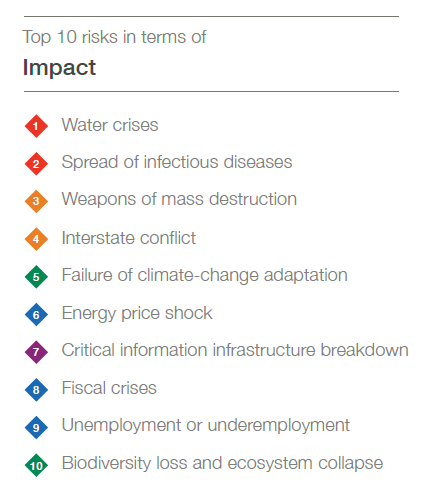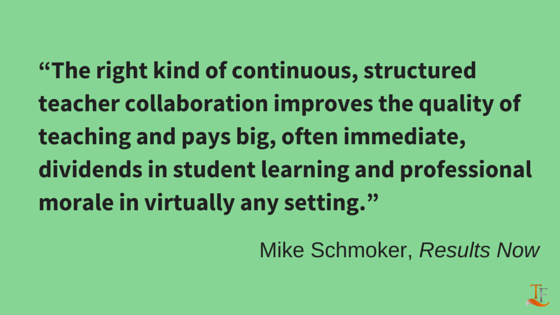Can Knowledge Networks Solve World’s Biggest Problems?

Knowledge networks enable rapid knowledge sharing, which, in turn, accelerates important processes in today’s business.
Whether we consider customer needs, product development process or specific projects, knowledge networks make possible for people to collaborate across geographic and organizational borders.
The knowledge networks benefits stem from new technologies that have made collaboration easier and creative people who are finding ways to use and apply those new technologies efficiently.
But benefits of knowledge networks are seen beyond the usual business context.
Knowledge networks have great potential to address global issues and critic problems, some of the world’s biggest problems we all face today.

According to the 10th edition of the Global Risks report, the top global risks in terms of likelihood over the coming 10 years are: interstate conflict with regional consequences is the number one global risk in terms of likelihood, followed by the risk of extreme weather events (2), failure of national governance systems (3), state collapse or crisis (4) and high structural unemployment or underemployment (5).
 In terms of impact, nearly 900 experts that took part in the survey rated water crises as the greatest risk facing the world. Ten global risks are shown in the picture.
In terms of impact, nearly 900 experts that took part in the survey rated water crises as the greatest risk facing the world. Ten global risks are shown in the picture.
According to the recent Pew Research Center survey, many publics worldwide name global climate change as the top threat, while other reports indicate that food waste is becoming serious environmental and economic issue.
The United Nations global survey for a better world The World We Want shows that the top priorities for more than 4 million people from every nation are better education and health care, less corruption, more jobs and affordable food.
How can technology address some of these problems?
We have already seen how technology is changing societal and economic landscape, constantly testing our abilities to develop new, more effective solutions.
“Innovation is critical to global prosperity, but also creates new risks. We must anticipate the issues that will arise from emerging technologies, and develop the safeguards and governance to prevent avoidable disasters”, said John Drzik, President of Global Risk and Specialties at Marsh.
Emerging technologies have far-reaching societal and economic implications.Tweet
One of the ways technology enables us to do so is by providing the tools for effective collaboration and knowledge sharing and management.
This poses a question:
How can knowledge networks help us address some of the world's biggest problems?
Knowledge networks (and collaboration technology) can be deployed effectively in the areas where we need quick access to real-time information, enhancing decision-making capabilities of participants.
Oftentimes it’s difficult to know who knows what, and that’s precisely what knowledge networks provide - the tools we can use to determine who knows what and then bring experts and professionals around the same idea where knowledge can be applied, shared and transferred.
Talent shortage in certain industries is also a significant problem, but knowledge networks can offer a solution as knowledge can be effectively captured by technology as a resource for new employees.
Collaboration through knowledge networks enables professionals to engage with those who can help them better understand the data or information that are available to them.
By enabling collaboration across geographic and organizational borders, knowledge networks are also effective outsourcing tools.
What are some examples of good practice?
Here are some good examples of knowledge network benefits related to Health, Education and Water crisis.
Health
These are some statistics from the World Health Organization (World Health Statistics 2015):
- 15% of women worldwide are obese
- One quarter of men have raised blood pressure
- Two-thirds of deaths in the world are due to noncommunicable diseases
- Two-thirds of pregnant women with HIV receive antiretrovirals to prevent transmission to their baby (in low- and middle-income countries)
In the WHO African Region,
- only 1 in 2 women gives birth with the support of a skilled birth attendants
- 1 in 4 women who wants to prevent or delay childbearing does not have access to contraceptives
How is the World Health Organization addressing some of these problems?
The World Health Organization has established 9 knowledge networks: Early Child Development, Employment Conditions, Social Exclusion, Globalization, Health Systems, Priority Public Health Conditions, Women and Gender Equity, Urban Settings and Measurement and Evidence.
The key priority of Employment Conditions knowledge network, for instance, is to research and gather data on the threat of unemployment, clarifying its impact on workers’ health.
Women and Gender Equity knowledge network examines and researches actions and mechanisms that will reduce gender-based inequality in health, while Priority Public Health knowledge network's goal is to analyse the factors that will contribute to the implementation of the programmes for increasing access to health care for socially and economically disadvantaged groups.
Knowledge networks are proven effective tools for creating, sharing, and applying organizational knowledge.
Moreover, all participants are enabled to communicate more quickly, and contribute to policy and practice. Workers with easier access to relevant knowledge are more productive as they spend less time looking for information and more time focusing on applying it.
By networking and communicating with other professionals in certain field (and the global public health community), professionals can leverage knowledge assets more effectively and exchange resource materials, tools and effective practices.
Education
In the field of education, the knowledge management has created new challenges and opportunities. As the society focuses on collaboration and knowledge sharing, knowledge networks are becoming increasingly popular in the context of education.
"There is no point in asking which came first, the educational explosion of the last one hundred years or the management that put this knowledge to productive use. (...) The emergence of management has converted knowledge from social ornament and luxury into the true capital of any economy." Peter Drucker (The new realities, 1989)
Countries such as Canada, The Netherlands, Great Britain and the United States have been conducting research in this area since 1980s.

Through a knowledge network, students and faculty are becoming a part of a continuous learning spectrum; an interaction between them is enhanced and contact with a vast array of knowledge resources enables the seamless flow of discussion and documents.
As knowledge is no longer restricted by place, distance, or format, networks are able to meet the specific educational interests of individual students.
A growing number of universities are creating knowledge networks that are either focused on connecting educators or sharing knowledge between teachers, or to connect students and educators into new learning environment.
There is also a growing need for corporate university education (University of Western Sydney) and collaboration between governmental institutions and universities, such as the example of The Knowledge of Applied Education Research.
On the other hand, we can see other great initiatives in the education sector, such as the The Alaska Native Knowledge Network.
As ‘knowledge organizations’, universities, schools and other educational organizations need to improve their information and knowledge management in order to effectively respond to the internal and external environments in which they operate.
Water
Many of the problems on a global scale stem from water, starting with the crisis in the world’s water supply. Around 5 billion people in the world suffer from strained access to clean water.
Espen Elde, the managing director of the WFT, explains the seriousness of the problem:
“We could see the same tensions around water as we have seen around oil.”
Water supply challenges are becoming more severe and we can see how technology is addressing the problems of intelligent management of water distribution. On the other hand, as knowledge networks have powerful tools to bring people together, we can also see how institutions, companies, organizations and individuals are bind by the same objective in a response to a real need.
Optimizing the knowledge within any organization or company will help people to manage the glut of information, transforming data and information into meaningful knowledge. This is the best example of how knowledge networks resolve the problem of who knows what.
As people come together across organizational, spatial and disciplinary boundaries, they can prioritize and synthesize data, and having access to expertise, they can evaluate, contextualize, and understand those information, and successfully apply it to their jobs, project, initiatives.
The Water Network is the largest global knowledge network for water professionals.
The network brings together companies from 180 countries, that have tools and resources to create a worldwide knowledge group. By now, the network has directly influenced 9 million knowledge workers who are focused on addressing the problems related to safe water and sanitation.
Though the Water network, a vast number of advisors and professionals, 8000 companies and 110 technology volunteers from all around the world are brought together to achieve a common goal. When enthusiastic and self-motivated people are gathered around the same goal, innovative outcomes are enhanced.
The benefits of knowledge networks come from:
- Accelerated Knowledge Transfer
- Productivity and Agility
- Creativity
- Costs and Optimization
If you need a knowledge network, TallyFox can help you create a powerful knowledge network platform, fully customizable to your organization or community needs, with integrated content, project and knowledge management, and unlimited workspace subdomains.
With knowledge networks, individuals themselves can determine how to acquire, use and develop their knowledge.

Comments
Leave a comment